
Community Outreach on the Traditional Lands of the Southern Tutchone People
Expedition Location: Kluane Lake Research Station
Expedition Dates: 6/2/2025- 6/10/2025
Field Team Members: Dominic Winski, Inga Kindstedt, Sicely Sohn (report author)
Funding Support: Sturgis Exploration Fund
Introduction: Far north regions are warming at an accelerated rate compared to the global average (Williamson et al., 2020). Non-polar ice in the Gulf of Alaska region carries a significant amount, nearing 40mm, of sea level rise potential (Farinotti et al., 2019). In order to form a better understanding of the ice history, cores are drilled in deep regions and used for analysis. A project has been set in motion for a deep core on the Eclipse Icefield in the St. Elias Range, Yukon, Canada. In a core from this region, we hope to see deeper into the climate record of the Holocene and note any changes in firn density (Calkin et al., 2001). Previous firn cores and a 350m ice-to-bedrock core have been done on this icefield, however, a more recent radar study has shown evidence that the deepest portion of the icefield is 700m deep (McConnell, 2019; Yalcin et al., 2006). A core drilled at this deep-ice position can be expected to show a climate record of up to 10,000 years. This project has a three year timespan for fieldwork. In the 2026 season, a team will conduct a geophysical survey using ground penetrating radar to verify the intended location for the 700m core on the Eclipse Icefield. In 2027 the coring team will drill the ice-to-bedrock core at this verified location.
Results and significance: During the 2025 field season our team worked on creating a strong interpersonal foundation with our on-site partners, Kluane Lake Research Station (KLRS), Kluane National Park and Reserve (KNPR), Kluane First Nation (KFN) and Champagne and Aishihik First Nation (CFN). Western scientists have historically excluded indigenous people while exploiting the land that was stolen from them. As scientists working on the traditional lands of the Southern Tutchone People, we prioritized highlighting voices that have been excluded and who will be affected by our work. To understand the community better, we did preliminary work through completion of the Yukon First Nations 101 course developed by Yukon University. With the future coring expedition in mind, we met with members of CFN and discussed possible signals in the ice that would be of interest to them. Through an informal meeting with Hannah Currie, the Natural Resources Manager for KFN, we created lasting connections on site with the community and assisted in planting a greenhouse. We taught a local sixth grade class from Haines Junction about ice cores using a modular activity developed using data from the Denali Ice Core Project (Fig. 2-3). We got to know the students and community members better by participating in a soccer game and a scavenger hunt of native species after the activity (Fig. 4-5). We presented our plan to core on the Eclipse icefield to the community at the KLRS community night. Our team met with a KNPR ranger, Jonny Cromwell, to discuss permitting and logistics for the 2027 coring expedition and learned more about how integrated KFN is in the decision process. While at KLRS, we overlapped with a First Nations artist in residence, Jaymie Campbell, and were lucky enough to learn about the process and cultural roots of traditional beadwork (Fig. 6). Our work this summer included many important conversations and vital connections with a community who will be directly affected by our future work on the Eclipse Icefield.
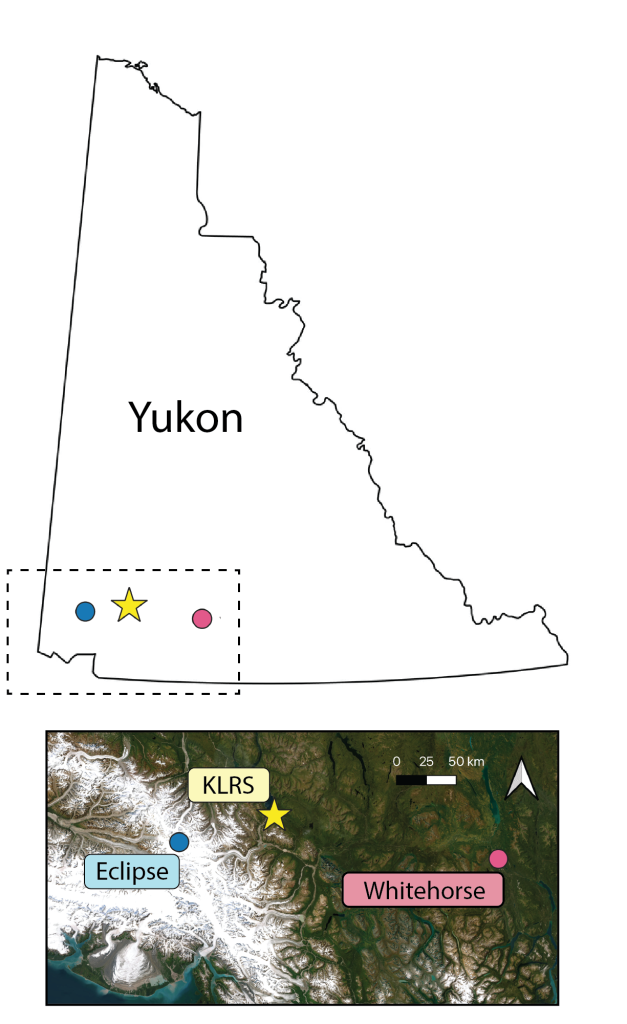

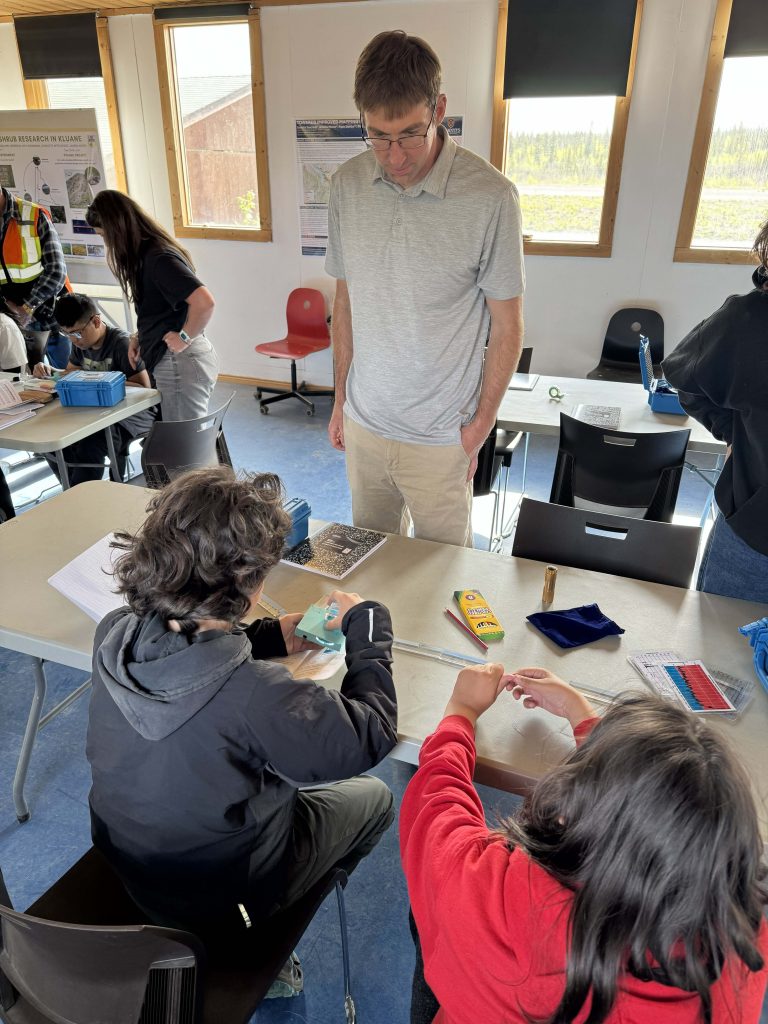
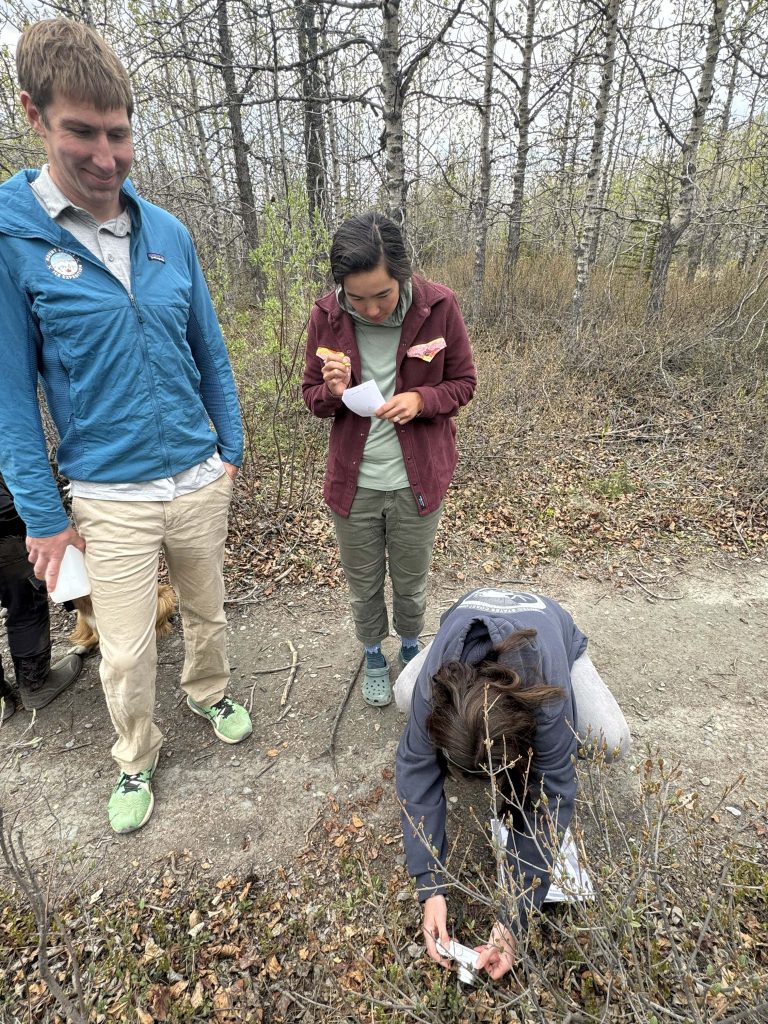
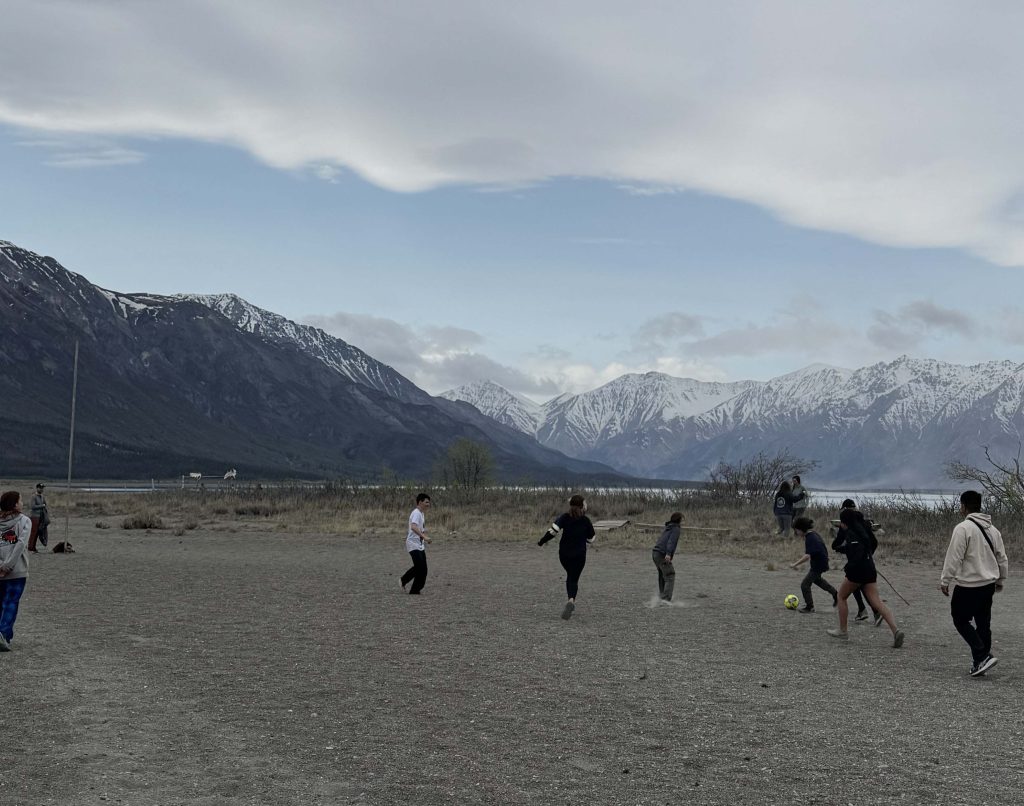
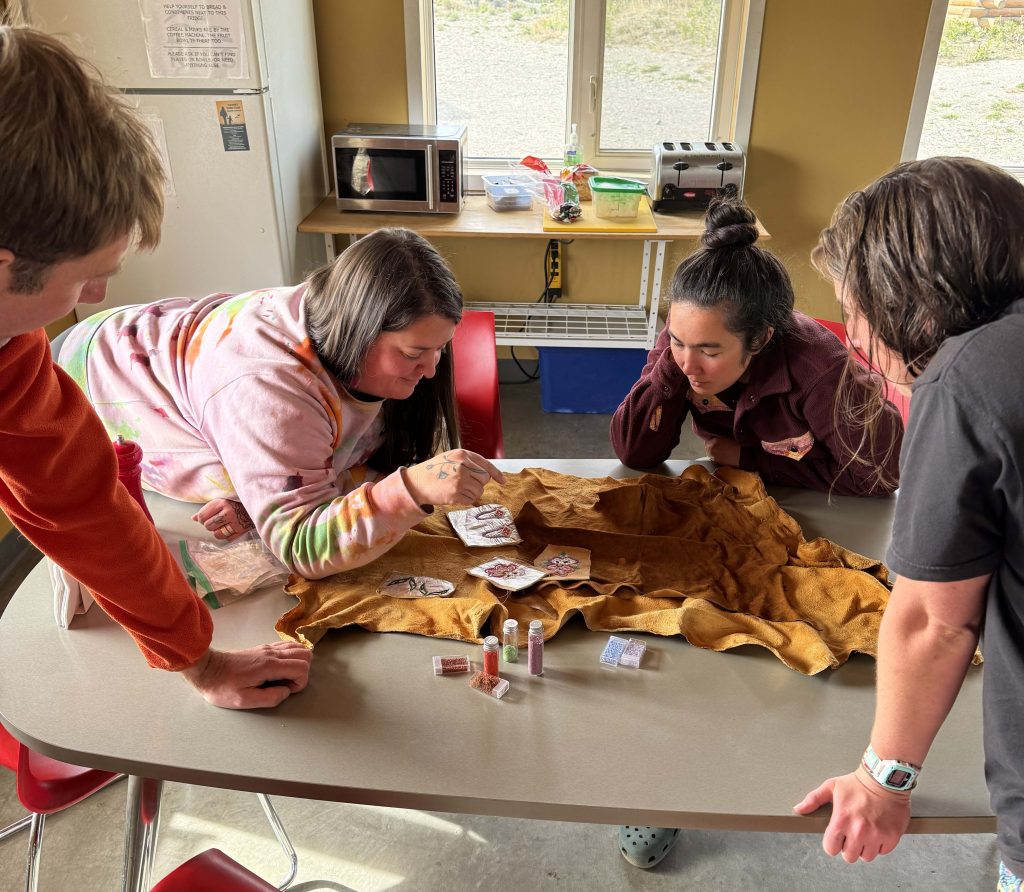
Acknowledgements: We would like to thank the Robert and Judith Sturgis Family Foundation Exploration Fund, Kluane Lake Research Station, and University of Maine School of Earth and Climate Sciences for making this work possible.
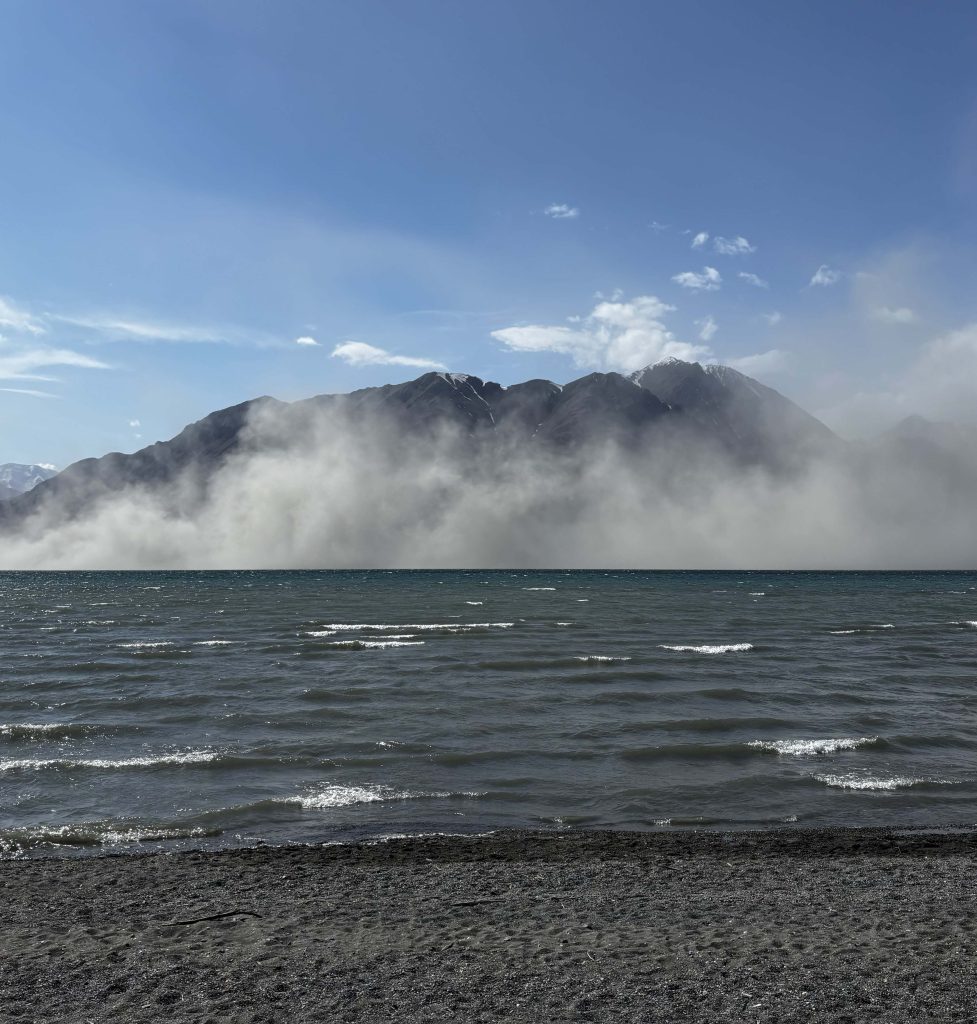
References:
Calkin, P.E., Wiles, G.C. and Barclay, D.J. (2001). Holocene coastal glaciation of Alaska. Quaternary Science Reviews 20, 449-461. Quaternary Science Reviews 20, 449-461.
Farinotti, D., Huss, M., Fürst, J. J., Landmann, J., Machguth, H., Maussion, F., & Pandit, A. (2019). A consensus estimate for the ice thickness distribution of all glaciers on Earth. Nature Geoscience, 12(3), Article 3. https://doi.org/10.1038/s41561-019-0300-3.
Kindstedt, I., Schild, K., Winski, D., Kreutz, K., Copeland, L., Campbell, S., & McConnell, E. (2022). Offset of MODIS land surface temperatures from in situ air temperatures in the upper Kaskawulsh Glacier region (St. Elias Mountains) indicates near-surface temperature inversions.https://doi.org/10.5194/tc-16-3051-2022.
Kindstedt, I., Winski, D., Stevens, C. M., Skelton, E., Copland, L., Kreutz, K., Mannello, M., Clavette, R., Holmes, J., Albert, M., & Williamson, S. N. (in review). Ongoing firn warming at Eclipse Icefield, Yukon, indicates potential widespread meltwater percolation and retention in firn pack across the St. Elias Range. https://doi.org/10.5194/EGUSPHERE-2024-3807.
Williamson, S. N.,Zdanowicz, C., Anslow, F. S., Clarke, G. K. C., Copland, L., Danby, R. K., Flowers, G.E., Holdsworth, G., Jarosch, A. H., & Hik, D. S. (2020): Evidence for Elevation-Dependent Warming in the St. Elias Mountains, Yukon, Canada. J. Climate, 33, 3253–3269, https://doi.org/10.1175/JCLI-D-19-0405.1.
Zemp, M., Huss, M., Thibert, E., Eckert, N., McNabb, R., Huber, J., Barandun, M., Machguth, H., Nussbaumer, S. U., Gärtner-Roer, I., Thomson, L., Paul, F., Maussion, F., Kutuzov, S., & Cogley, J. G. (2019). Global glacier mass changes and their contributions to sea-level rise from 1961 to 2016. Nature, 568(7752), Article 7752. https://doi.org/10.1038/s41586-019-1071-0.

